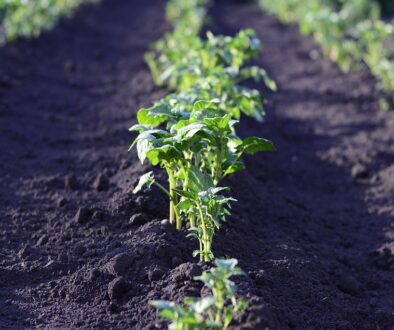Article by: Suzette Morshead
How to Grow a Thriving Vegetable Garden: Expert Tips and Tricks
Growing a vegetable garden can be one of the most rewarding experiences, offering fresh produce, a sense of accomplishment, and a closer connection to nature. Whether you’re a beginner or have some gardening experience, these expert tips and tricks will help you cultivate a thriving vegetable garden that yields bountiful harvests.
Personal Story: My Journey to a Thriving Garden
A few years ago, I decided to start my own vegetable garden. As a complete novice, I was both excited and overwhelmed. My first attempt was a humble effort: a small patch in my backyard with tomatoes, lettuce, and carrots. At first, success was limited—I struggled with pest control, inconsistent watering, and soil quality. However, with persistence and learning from my mistakes, my garden eventually flourished. Now, every summer, I enjoy fresh, homegrown vegetables and the satisfaction that comes with it. This journey taught me that gardening is as much about patience and learning as it is about planting.
Expert Tips and Tricks for Growing a Thriving Vegetable Garden
-
Choose the Right Location
- Vegetables need ample sunlight. Select a spot that receives at least 6-8 hours of direct sunlight daily.
- Ensure the area has good drainage to prevent waterlogging.
-
Prepare the Soil
- Start with nutrient-rich soil by adding organic compost or well-rotted manure.
- Test the soil pH and adjust if necessary; most vegetables prefer a pH between 6.0 and 7.0.
- Loosen soil to improve aeration and root growth.
-
Select Suitable Vegetables
- Choose vegetables compatible with your climate and season.
- Start with easy-to-grow varieties like tomatoes, lettuce, zucchini, and beans.
-
Plan Your Garden Layout
- Consider companion planting to enhance growth and deter pests.
- Space plants adequately to avoid overcrowding and promote airflow.
-
Water Consistently
- Vegetables generally need about 1-2 inches of water per week.
- Water deeply in the morning to encourage deep root growth and reduce disease risk.
-
Mulch for Moisture and Weed Control
- Use straw, wood chips, or shredded leaves to retain moisture and suppress weeds.
-
Manage Pests and Diseases Naturally
- Encourage beneficial insects like ladybugs.
- Use natural remedies such as neem oil or homemade garlic sprays.
- Regular Maintenance
- Remove weeds promptly.
- Prune and stake plants as needed.
- Harvest regularly to encourage production.
Items You Might Need for Your Vegetable Garden
- Quality garden soil or compost
- Garden tools (trowel, hoe, pruning shears, watering can or hose)
- Seeds or seedlings of chosen vegetables
- Mulch materials (straw, wood chips, or leaves)
- Fertilizer (organic options preferred)
- Pest control solutions (organic sprays, insecticidal soap, neem oil)
- Garden gloves to protect your hands
- Plant supports like stakes or cages for vining plants
Conclusion
Growing a vegetable garden is a fulfilling endeavor that rewards you with fresh food and a deeper appreciation for nature. By choosing the right location, preparing your soil well, planning your garden carefully, and maintaining consistent care, you’ll be on your way to a flourishing garden. Remember, every gardener starts somewhere—learn from experience, enjoy the process, and celebrate your successes!
Happy gardening! 🌿🥕🍅
Article by: Suzette Morshead


